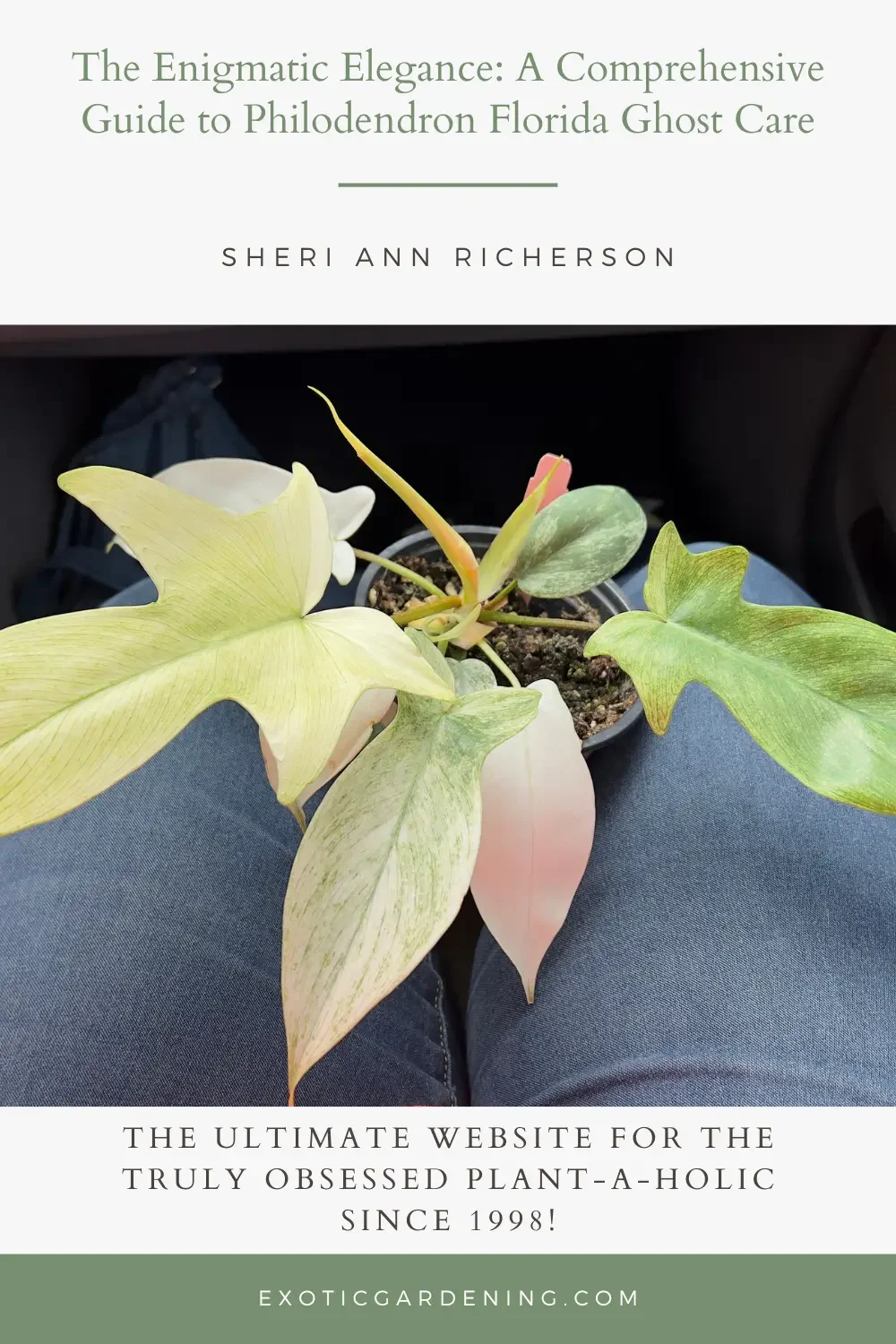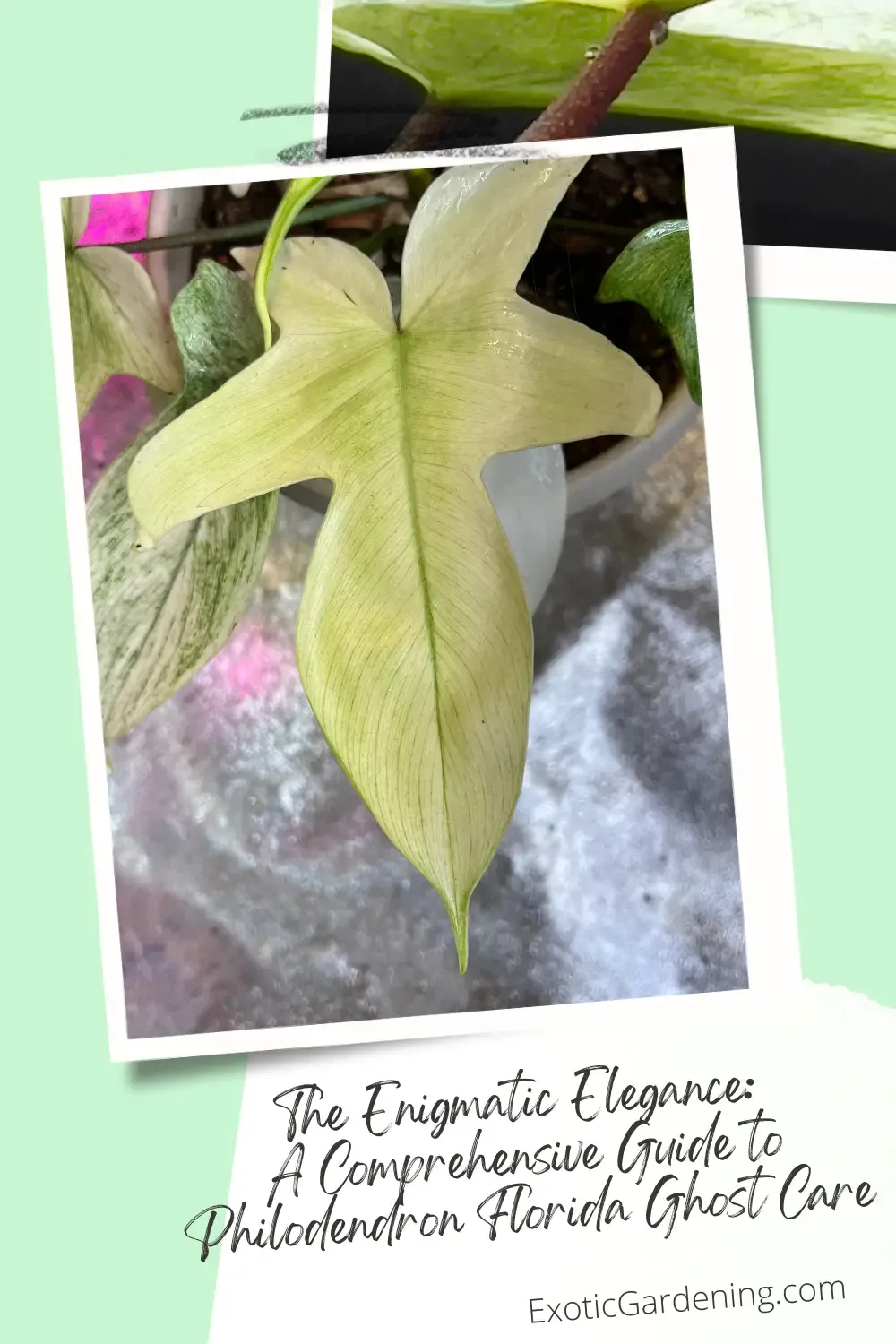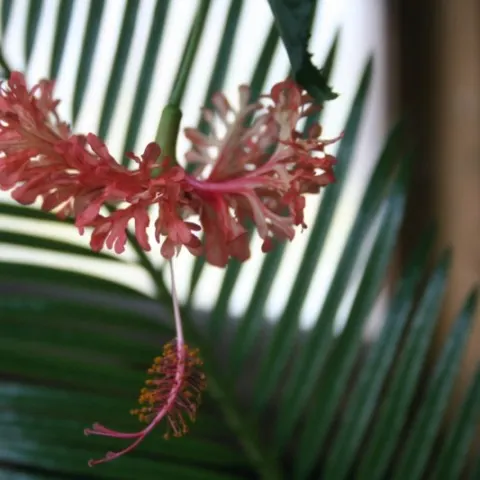The Philodendron Florida Ghost, with its captivating beauty and unique characteristics, has become a beloved addition to many indoor plant enthusiasts' collections.
Known for its striking appearance and relatively low maintenance requirements, this rare and elusive plant has gained a reputation as a prized possession among plant lovers.
In this guide, we'll delve into the world of Philodendron Florida Ghost care, providing you with all the essential information needed to ensure its health and vitality.
Philodendron Florida Ghost: A Botanical Marvel
The Philodendron Florida Ghost, scientifically known as Philodendron 'Florida Ghost,' emerges as a testament to nature's artistry.
Originating from the Araceae family, this plant boasts a lineage steeped in botanical elegance.
Its hallmark feature is its translucent leaves that appear almost ghostly in the right lighting conditions, evoking a sense of otherworldly beauty.
This philodendron's growth habit is notably versatile, making it a charming addition to any indoor space.
As a vine plant, it possesses a trailing growth tendency, offering the opportunity to train it to ascend a moss pole or cascade gracefully, reminiscent of a living curtain of foliage.
Mastering the Art of Philodendron Florida Ghost Care
Caring for a Philodendron Florida Ghost entails a profound understanding of its unique requirements.
To unlock its full potential and preserve its exquisite appearance, we must unravel the intricacies of its care.
Let's embark on this journey step by step:
Lighting: A Dance of Light and Shadows
The key to a thriving Philodendron Florida Ghost is the right balance of light.
It thrives in bright, indirect light, akin to the gentle caress of sunlight filtered through curtains.
However, beware of exposing it to direct sunlight, as those delicate leaves can suffer from sunburn.
Temperature and Humidity: Mimicking the Tropics
To mimic its native tropical habitat, maintain a steady temperature between 65-80°F (18-27°C).
Higher humidity levels are a boon for this plant.
You can recreate the rainforest feel by misting its leaves regularly or employing a humidity tray.
Watering: Sipping Sustainably
Philodendron Florida Ghost appreciates a consistent watering routine.
Allow the top inch of the soil to dry before offering a drink.
When you water, be thorough, ensuring that excess water escapes through the pot's drainage holes.
Overwatering is a formidable foe, as it can lead to the dreaded root rot.
Soil: The Foundation of Thriving
A well-draining potting mix with excellent aeration is the secret to a contented Philodendron Florida Ghost.
A mixture incorporating peat, perlite, and orchid bark checks all the boxes.
Fertilization: Nourishing the Elegance
During the growing season (spring and summer), treat your plant to a balanced liquid fertilizer every 4-6 weeks.
However, when the dormant season (fall and winter) arrives, consider reducing or suspending fertilization to honor its natural rhythm.
Pruning and Propagation: Shaping the Beauty
Should your Philodendron Florida Ghost exhibit leggy growth, fear not!
Pruning can be your ally in coaxing bushier growth.
Remove any damaged leaves to maintain its pristine appearance.
Additionally, if you're looking to expand your plant family, especially if you want to go for variegated or rare plants, the Florida Ghost is amenable to propagation through stem cuttings, which can be rooted in water or soil.
Potting and Repotting: Providing Space to Flourish
As your Philodendron Florida Ghost matures, it may outgrow its current home.
When it becomes root-bound or every 1-2 years, consider repotting it.
Opt for a slightly larger pot and refresh the potting mix to accommodate its growing needs.
Unlocking Elegance: The Philodendron Florida Ghost in Your Indoor Haven
The allure of the Philodendron Florida Ghost transcends its captivating appearance.
It's a symbol of elegance and beauty that, with the right care, can flourish in your indoor haven.
By following the care instructions outlined in this guide, you are poised to relish the enchanting beauty of this rare plant while nurturing its growth and health.
Whether you're a seasoned plant parent or a newcomer to the world of indoor gardening, the Philodendron Florida Ghost promises to be a cherished addition to your botanical collection.
Its ethereal presence will transform your space into a haven of elegance and natural beauty, inviting you to partake in the wonder of the plant kingdom.
FAQ Section: Navigating Philodendron Florida Ghost Mysteries
Q: Why are the leaves of my Philodendron Florida Ghost turning yellow?
A: Ah, the mystery of yellow leaves! They're like nature's way of saying something's up. Yellow leaves on your Philodendron Florida Ghost might signal overwatering, underwatering, poor drainage, or even a light-related dilemma. It's detective time! Check the soil moisture—let it dry out a bit before watering. Ensure your lighting game is on point with bright, indirect rays. With some sleuthing, you'll uncover the leafy truth.
Q: Can I place my Philodendron Florida Ghost in direct sunlight?
A: Picture this: your Philodendron Florida Ghost basking in the sun like a beachgoer in summer. Well, hold that thought! Direct sunlight is a bit too intense for this leafy friend. It prefers a more sophisticated setup—bright, indirect light. Direct sun can turn those delicate leaves into crispy critters. Keep it classy, not crispy!
Q: How do I increase humidity for my plant?
A: Your Philodendron Florida Ghost might be secretly dreaming of the Amazon rainforest. To indulge that dream, give it some misty love. Regular leaf misting is like a spa day for your plant. Or, create a humidity oasis with a tray filled with water and pebbles. If you're feeling fancy, a room humidifier works wonders. Your plant will thank you for the tropical makeover!
Q: Is the Philodendron Florida Ghost toxic to pets?
A: Pets and plants, a classic love story, right? Well, not for the Philodendron Florida Ghost. It has a toxic secret. If your furry friends decide to take a nibble, it won't end well. Keep it out of their curious reach, and they'll live happily ever after, separately.
Q: Can I trim the aerial roots that grow along the stems?
A: Those quirky aerial roots are like the plant's adventurous sidekicks. They help it climb and gather nutrients. Trimming them would be like taking away Spider-Man's web shooters. It's best to let them be. But, if they start going wild and unruly, just gently tuck them back into the pot. Happy roots, happy plant!
Q: How often should I water my Philodendron Florida Ghost?
A: Ah, the eternal question of hydration! Your Philodendron Florida Ghost prefers to keep things slightly moist but not soggy. Water it when the top inch of the soil feels dry to the touch. Remember, overwatering is a plant parent's arch-nemesis!
Q: Can I use tap water for my Philodendron, or is filtered water better?
A: Water, water everywhere, but what's best for your plant? Philodendron Florida Ghost isn't too picky. You can use tap water that's been left out for a day to allow chlorine to dissipate. But if you want to spoil it, filtered water or rainwater works like a charm. Just avoid extremes like distilled water.
Q: Is fertilizing essential, and how often should I do it?
A: Your Philodendron Florida Ghost appreciates a good meal from time to time, but don't overdo it! During its growing season (spring and summer), feed it with a balanced liquid fertilizer every 4-6 weeks. But when it takes a rest during fall and winter, hold off on the buffet.
Q: Should I be concerned if my Philodendron Florida Ghost starts getting leggy?
A: Leggy plants need some fitness tips, right? If your Philodendron Florida Ghost starts getting leggy, it's craving more light. Pruning can help promote bushier growth. Behead it with love, and watch those new leaves sprout!
Q: Can I place my Philodendron Florida Ghost near other houseplants, or does it prefer its own space?
A: Your Florida Ghost can be quite the social plant! It doesn't mind the company of other houseplants. Just ensure they share similar lighting and humidity preferences. Plant friendships can be delightful!
Q: Is repotting necessary, and how do I know when it's time?
A: The potting dilemma! You'll know it's time to repot when your Philodendron Florida Ghost outgrows its current home, or when it becomes root-bound. Typically, every 1-2 years is a good timeframe or when you see the roots start to come out of the bottom of the pot. Just give it a slightly larger pot with fresh, well-draining soil, and it'll stretch its roots happily.
Q: Are there any common pests or diseases that I should watch out for?
A: The plant's nemesis! Watch out for pesky pests like spider mites, mealybugs, and aphids. Keep an eye out for discolored or misshapen leaves, sticky residue, or tiny critters. If you spot any, it's time for a plant pest showdown with neem oil or insecticidal soap!
Q: Can I propagate my Philodendron Florida Ghost, and how do I do it?
A: The art of plant duplication! Yes, you can propagate your Philodendron Florida Ghost. Snip a healthy stem cutting with at least one node, let it callus for a few hours, then pop it in water or well-draining soil. Before you know it, you'll have a new baby Philodendron to nurture!
With these FAQs, you'll have a treasure trove of knowledge to ensure your Philodendron Florida Ghost thrives and remains a captivating addition to your indoor garden.
Tropical Fruit And Foliage Plants
Tropical Plants For Medium To High Light
Check out these awesome tropcial plants for medium to high light that make wonderful, easy to care for houseplants.
Caring for Indoor Palm Plants: Tips for Thriving Green Beauties
Discover expert tips for caring for indoor palm plants, ensuring their vitality and adding a touch of tropical elegance to your space.
How To Grow Cinnamon
Learn how to grow cinnamon from seed or cuttings. Cinnamon trees do well as houseplants even though they can get rather large.
How To Grow And Harvest Pineapple From Home
Learning how to grow and harvest pineapple is a fun project that anyone in any climate can experience as long as they are patient.
Colorful Foliage Plants
Try these colorful foliage plants in your garden this summer and then bring them indoors during the winter to brighten up your home decor.
Easy Exotic Houseplants: Tropicals That Thrive Indoors in Containers
Tropical plants are the most beautiful, easy to grow indoor houseplants. Start growing exotic houseplants today that fruit and flower!
Eucalyptus Growing Indoors: Tips and Troubleshooting Guide
Discover the art of eucalyptus growing indoors for year-round beauty and fragrant cut foliage in your flower arrangements.
My Theobroma cacao Story
I've had a love affair with growing chocolate for over twenty years, so I wanted to share my Theobroma cacao story with all of you.
Scented Grass Adds Natural Fragrance To The Home Or Garden
Scented grass is one way to add scent to your garden or even your home. Best of all, they look pretty, smell great and have practical uses.
Learning About Bananas
Once you start learning about bananas you may find this popular and important fruit is really quite fascinating and makes a great houseplant.
Incorporating Bold And Exotic Plants Into Your Landscape
Discover the allure of bold and exotic plants for your garden in this comprehensive guide. Transform your landscape today!
Variegated And Other Interesting Plants: Elevate Your Space with Nature's Painted Wonders
Explore the world of variegated and unique plants, adding vibrant beauty and intrigue to your indoor oasis.
How To Grow Tropical Plants
Growing tropical plants - also known as houseplants - indoors is fun and enjoyable plus many of them clean the indoor of pollutants.
It is easy to grow exotic looking plants that produce tropical fruit and colorful flowers in a pot in your living room or office.
Many of these plants are easy to start from seed and I share with you five plants that I recommend for indoor growing.
I also share with you why growing your own tropical fruit saves money.
In this video you will learn:
How to bring tropical plants indoors at the end of summer
How to grow tropical plants indoors
How to protect and overwinter tropical plants outdoors in cold climates
How to propagate tropical plants
How to water tropcial plants
How to grow topical plants in a greenhouse
















